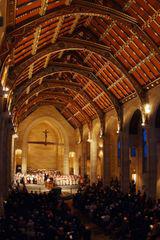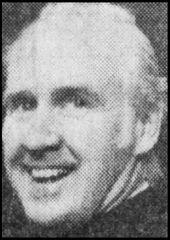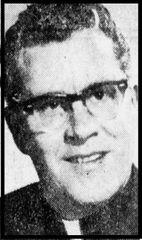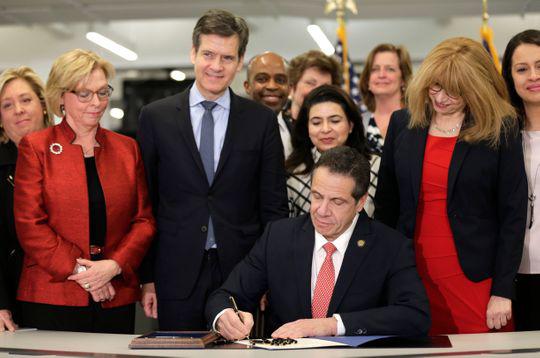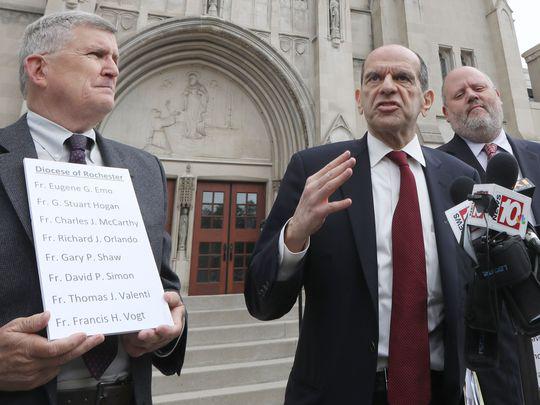|
Day of reckoning: A wave of fresh accusations against priests has been unleashed
By Steve Orr And Sean Lahman
[with video] After decades of anguish and argument over sexual abuse in the Roman Catholic Church, a final reckoning may be coming for New York parishioners. Over the last quarter century, sexual abuse allegations, some of them horrendous, have been lodged in fits and starts against more than 400 priests and others associated with the church in New York state. The church hierarchy has been accused of concealing the truth about sexual misconduct as well. But the number of past accusations and admissions pale in comparison to what's happening today, and what will happen in the months ahead. The Democrat and Chronicle has found this confluence of events:
Combined, the three initiatives will provide a painful yet welcome opportunity for victims of sexual abuse to grievances against priests that have festered for decades. 'He did this to me, and it’s been following me my whole life'Colleen O’Hara Carney and her sister say they were abused more than 45 years ago by a Jesuit priest, the Rev. Peter Conroy, a Rochester native who was a member of their extended family. His behavior including touching, grabbing and groping the girls when they were adolescents. The family later reported the acts to the Jesuits and to the diocese of Buffalo, where Conroy was assigned in the early 2000s. At least one other complaint was made by a young woman who encountered Conroy on a college campus, Carney said. Decades later, Carney is still troubled. “It keeps rearing its ugly head. He did this to me, and it’s been following me my whole life,” said Carney, who is 60 years old. Earlier this week she signed the paperwork authorizing a lawsuit be filed against Conroy and the Jesuits. “I just want acknowledgment,” said Carney, who added she hopes legal action will hold Conroy and his order to account, alleviate some of the anguish that she and her family feel and support the people who have worked to bring the church’s secrets to light. The church’s reconciliation program is private, though victims are free to speak about their cases. Litigation can play out beyond public view as well, and the extent of the information that will be released by Attorney General Letitia James is unknown. But advocates for sexual-abuse victims say they’re confident the flood of settled claims, lawsuits and the attorney general’s probe will reveal much. "Because the doors of the courthouse have been locked, the information about what the dioceses knew and when they knew it, that remains under lock and key. The new law, frankly, is going to blow that door open. The survivors can share their stories," said J. Michael Reck, a lawyer with a Minnesota firm that specializes in clergy abuse cases and has an office in New York City. "We’re going to be able to crack open those secret archives," Reck said. "I think what we know right now is a drop in the bucket. I think we’re going to find out a lot more." Law change opens August windowFor decades, the rock on which child sexual abuse lawsuits foundered was New York’s statute of limitations. These laws limit the amount of time that can elapse between an act of abuse and a lawsuit seeking damages for that act. There are statutes of limitations for crimes as well. The underlying idea of a limitation is to ensure the best evidence and witnesses are available when the lawsuit is filed. But New York’s limitations for claims of child sexual abuse were among the most severe in the country. Consider what happened with three high-profile civil actions filed against the Rochester diocese and its clergy:
In each of those cases, lawyers had what they believed was credible evidence that the plaintiffs had been sexually abused and left deeply scarred. But they never had the opportunity to present that evidence in court. Each of the cases was dismissed out of hand, at least in part because the plaintiffs had waited too long to bring suit. State law then required that most civil actions for such abuse be filed before the victim reaches age 23, and in some cases earlier than that. In each of the three high-profile cases, the plaintiffs were in their 40's. Experts say that gap in time between violation and litigation is common among victims of child sexual abuse. Many of them don't come to terms with their injury until middle age. "Some say the usual age of revelation is about 50," said Robert Hoatson, founder of Road to Recovery, a support group for survivors of sexual abuse. "A victim only comes forward when they have the 'tools' to reveal the abuse." For that reason, multimillion-dollar jury awards against abusive priests and their dioceses have been rare in New York compared to other states with more liberal statutes of limitations. But now the law has changed. The Child Victims Act, which went into effect earlier this month, sets new and more relaxed time limits on civil actions. Victims of child sexual abuse now will be able to bring suit at any time before they reach the age of 55. In addition, the law created a one-year window of time during which anyone may file suit over childhood sexual abuse, no matter how long ago the abuse occurred or the age of the accuser. 'A chance to heal deep wounds'Victims whose earlier lawsuits were dismissed due to the statute of limitations or for other technical reasons may re-file their cases. Victim advocates had urged state lawmakers to adopt the act for years. Officials of the Catholic Church resisted the proposal until it was amended to make clear that victims of abuse in any milieu, not just the church, could bring suit. It was adopted almost unanimously by the state Assembly and Senate in January, and signed by Gov. Andrew Cuomo on Feb. 14. The group of men who say they were abused by Rev. Cason, including the plaintiffs of the failed suit in 2002, also are considering going back to court, according to their lawyer, Ronald Benjamin of Binghamton. The 10 men who sued Rev. O’Neill intend to bring fresh litigation against the churches where O’Neill worked and against the Rochester diocese. "The new law makes it possible to revive that case. We will re-file," said Reck, whose firms represented the men the first time around. More victims have come forward since 2002 and may join the litigation, he said. The long-awaited liberalization of New York’s statute of limitations for child sexual abuse has brought lawyers who specialize in such cases flocking to the state. Firms are holding news conferences and flooding the airwaves, newspapers and the internet with advertisements soliciting clients. At least one firm, Idaho-based James, Vernon & Weeks, has opened an office in downtown Rochester. "For 13 years now, advocates like myself and others had been trying to get the Child Victims Act passed to get some access to justice for sex abuse survivors in the state," said the firm's co-founder, Leander James. "Each survivor heals in their own way, but healing always involves empowerment," James said. "Without the Child Victims Act, they had no access to legal process and the healing it can afford." "Recompense is important too, because that is tangible acknowledgement of the wrongdoer’s culpability, is recognition of their harm and provides funds the survivor can use to improve their lives," James said. Plaintiffs who were victimized as children and are now under age 55 can begin filing now. The one-year window for victims regardless of age opens in August. Mitchell Garabedian, a Boston-based attorney whose work was featured in the movie Spotlight has represented hundreds of alleged abuse victims. He said New York's legislation had set an example that other states should follow. "The Child Victims Act gives sexual abuse victims or survivors at least a chance to heal deep wounds, and it gives children at least a chance to be protected," he said. "For those sexual abuse victims who have unfortunately taken their own lives because of the trauma of being sexually abused, you have not been forgotten." Tsunami of lawsuitsIt was in part a concern about being overwhelmed by a tsunami of lawsuits that prompted Cardinal Timothy Dolan, who oversees New York’s eight dioceses, to propose an alternative. “With the Child Victims Act coming and pressure mounting and mounting, I think Cardinal Dolan ...and the bishops saw their own constituencies were against them on the issue and they had to do something,” James said. The Diocese of Albany was the first diocese in the state — and one of the first in the nation — to establish an Independent Mediation Assistance Program in 2004. But other dioceses had been slower to act. So in 2016, Dolan directed each diocese to create a reconciliation and compensation program to process claims against abusive clergy in a non-adversarial way. Church leaders saw the voluntary program as a way to ask forgiveness and provide compensation to members who were victimized by clergy. For victims, the program was meant to be faster, less stressful and more private than a trial in court. For the church, it would lessen the need of costly trials and reduce the risk of enormous jury awards. The dioceses see the reconciliation program as the next logical step in a lengthy uphill campaign by church leaders to come to grips with historic sexual abuse and regain the confidence of parishioners. “We’ve been trying to get the message out that this is our highest priority. We take it extremely seriously,” said Douglas Mandalero, spokesman for the Rochester diocese. Earlier steps in the campaign include removing countless priests from public ministry or from the priesthood altogether, and adopting training and screening programs to prevent future abuse. Perhaps the approach is working. Only two priests working in the Rochester diocese have been publicly accused of committing acts of abuse in the last 20 years. The reconciliation programs are run by independent lawyers paid by the dioceses to decide whether there is credible evidence the claimant suffered sexual abuse at the hands of a priest or other church official. If they find the claim credible, the administrators offer financial compensation. The dioceses have committed to honor the administrators’ decisions.
The Rochester diocese began the process later than others, hiring its administrator this spring, and no more than a dozen cases have been presented to date. The administrator, former state Supreme Court justice Robert Lunn, has resolved about half of them them in recent weeks. The known compensation offers have been as high as $125,000. An additional 10 or so have been submitted or will be submitted shortly. Nearly all the claims were filed by clients of attorney Leander James. James praised the reconciliation program in a recent interview, saying it can provide victims a sense of vindication and closure. "It’s not just about money. The money’s important. It will help them with their life. But it’s also about psychological healing. The process is really important for the healing of the person," James said. The coming wave of litigation, coupled with the tens of millions of dollars being paid out in the reconciliation program, will put enormous economic stress on the diocese. "We’re going through several dioceses' bankruptcies now and have been through many others. They are going to happen," James said. Typically, dioceses have filed under Chapter 11 of the U.S. bankruptcy code, which allows them to reorganize, pay creditors as best they can and continue operations. "The Chapter 11 bankruptcy process has important benefits to the diocese and other church entities. It also benefits for survivors," James said. "Put another way, it could be a good forum to resolve these cases for both sides." The lists, and the names not on themLawyers have begun making public dozens more names of clergy they say have engaged in sexual abuse in New York. Mitchell Garabedian, the noted lawyer from Boston, named eight on the steps of Rochester's Sacred Heart Cathedral last June. Jeffrey Anderson, another well-known lawyer, named 112 at a Manhattan news conference last week. Lawyers who make a practice of suing the church say they are aware of many more, including some who worked in the Rochester diocese. James said several involved other priests who have not been publicly identified as abusers before. One such name came to light last week, when James said the first victim to receive a settlement under Rochester’s reconciliation program had been abused decades ago by the Rev. Bernard Carges. The victim was offered $125,000 by Lunn. The diocese's chancellor, the Rev. Daniel Condon, said Carges had been well-respected, was not the subject of any prior complaints and for that reason was not included on the diocese's list of priests against whom there is credible evidence.
Rochester's was the first diocese in New York, and one of the first in the country, to generate its own list of priests they considered to have engaged in sexual misconduct. Drawing mostly on those published lists, the Democrat and Chronicle has compiled its own roster of about 425 priests and members of the laity implicated in sexual abuse who spent time in New York state now. The thoroughness of church’s lists is in question, however.
The Jesuit’s accounting was vague. The Christian Brothers order, which declared bankruptcy in the face of hundreds of sexual abuse claims, only named brothers with multiple confirmed allegations against them. Seven members of religious orders who have been named elsewhere as offenders, including Heathwood, are also not on Rochester’s list. Three priests accused of engaging with sexual misconduct with adults aren’t included. At least seven who worked within the diocese but committed abusive acts elsewhere, are left out. One of them, the Rev. Donald Bolton, spent four years in the Canandaigua area in the 1960s and was later proven to have begun molesting young girls shortly after he left.
As well, the Rochester diocese paid a settlement to a young man who sued in 1997 over sexual abuse perpetrated in a Niagara Falls hotel room by the Rev. Ronald Frederick seven years earlier. The man’s lawsuit was one of the few abuse lawsuits against the diocese that was not dismissed for timeliness because he filed it before the age-23 cutoff. The plaintiff in that case is a member of another list — the list of 20 people who have received cash settlements from the Rochester diocese for past acts of abuse before the current reconciliation program began. Some of those people brought suit, while others obtained settlements after approaching the diocese informally. They have been paid a total of $1,616,000. How much the diocese will pay during the current process is yet to be determined. AG will name abusive priestsThe most complete list of Catholic clergy who engaged in sexual misconduct may be the one that emerges from the investigation now underway by the state Attorney General’s charities division. The inquiry, launched in September, was one of many nationwide to be inspired by a groundbreaking grand jury investigation in Pennsylvania. That two-year probe, directed by Pennsylvania Attorney General Josh Shapiro, culminated in the August release of an 884-page report that sent shock waves nationwide. The report documented sexual abuse by 301 members of the Catholic clergy since 1950. It covered six of the state’s eight dioceses. In narrative language that was both compelling and shocking, the report detailed acts of pedophilia, rape and sexual addiction by priests and other clergy. It told of girls impregnated by priests who were forced to have abortions, depression and suicide by victims of abuse and unrelenting cover-ups by church officials and their supporters in the community. About 1,000 victims of childhood sexual abuse were identified in the course of the investigation, though the report said the true number of victims was in the thousands. Detailed accounts of abusive conduct by individual priests have come to light in the past in civil litigation and news accounts, but nothing as sweeping as the Pennsylvania report had ever been authored in this country. The investigation was undertaken with use of a grand jury, which subpoenaed internal church records and compelled witnesses to give sworn testimony. They obtained more than 500,000 pages of never-before seen material from the diocese. The grand jury did not bring any criminal charges but did recommend changes to state law, including the creation of a window for civil suits such as the one incorporated in New York’s Child Victims Act. The intent of the New York Attorney General’s investigation is to learn “how the dioceses and other church entities … reviewed and potentially covered up allegations of extensive sexual abuse of minors.” The office plans to name abusive priests in the same way Pennsylvania did, according to Monroe County District Attorney Sandra Doorley, who participated in a conference call about the investigation. The probe is not using a grand jury to compel testimony as far as is known, though the office has subpoenaed records from all eight of the state’s dioceses dating back to 1950. Morgan Rubin, a spokeswoman for the Attorney General's Office, declined to comment on the investigation. But Leander James, who has spent decades trying to wrest documents from the church, said he believes investigators likely obtained “sub-secreto” files — the paper kept under lock and key in each diocese that document abuse by clergy and church officials’ handling of it. These records, James said, are what will make the investigation a “game-changer.” Contact: SORR@Gannett.com
|
.
Any original material on these pages is copyright © BishopAccountability.org 2004. Reproduce freely with attribution.
